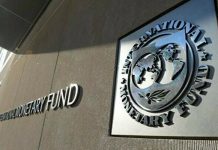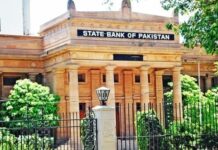ISLAMABAD: E-banking and e-commerce help to accelerate transition to a digital economy, which in turn helps to boost economic growth, says the Asian Development Bank (ADB).
The Bank in its latest report “E-Commerce in CAREC Countries Infrastructure Development” emphasized the importance of digital payments revolution in CAREC (Central Asia Regional Economic Cooperation Program) nations in order to modernize and strengthen the e-commerce industry in these countries, WealthPK reported.
The e-commerce industry has grown at a dizzying speed since the Covid-19 outbreak.
As a result of the pandemic’s lockdowns and other limitations, millions of people and businesses around the world have turned to the internet to enable cashless payments to buy and sell goods, reported WealthPK.
According to the report, Pakistan has a significant online shopping market with low penetration. The payment infrastructure is crucial for the development of e-commerce industry in the country.
The common misconception about e-commerce is that only the order, not the payment, must be placed online. The use of payment cards, digital money, or cashless payments enhances financial inclusion and lowers transaction costs, increasing consumption and efficiency.
In Pakistan, like many developing countries, cash on delivery (COD) remains a leading payment method in e-commerce transactions.
According to the State Bank of Pakistan (SBP), COD payments account for 60% of all online purchases in the country. The payment through card and digital wallet account for 31% and 9%, respectively.
The report further stated that despite having the second-lowest account penetration, Pakistan is placed third in terms of internet banking. In order to conduct cashless payments, not all account holders have connected their debit cards to their accounts. Based on the Findex survey in 2017, the report stated that less than 40% of account users in Pakistan owned a debit card.
“One cause for low bank penetration is a lack of faith in financial institutions, as well as a lack of finances to create an account,” said the report.
The availability of mobile phones and smartphones increases the use of mobile money, wallets, or banking apps, providing a significant potential to increase cashless banking transactions. The number of internet banking accounts grew at a 19% annual rate between 2017 and 2020.
The State Bank of Pakistan (SBP) has taken various initiatives to increase the electronic banking system in Pakistan.
Almost all banks are now providing digital banking facilities with a diversified menu of services.
The emergence of online payments has introduced several new payment methods and players into the market. This is disrupting traditional payment networks, lowering transaction costs for both buyers and sellers, and making online payments more convenient, including through payments using mobile phones.
“The payment system infrastructure needs to be robust, quick, and secure in order to handle a growing number of cashless payments and restore trust of the customers,” the ADB added.
Although, most CAREC economies, including Pakistan, have seen extraordinary growth in cashless payment penetration, infrastructure, and volume, people still need to be persuaded to embrace mobile and internet payments through government and business sector awareness campaigns.
INP






